The great Spanish dinner.
Today I am going to write about a great and stressful, crazy thing that we thought to do during our Erasmus in Aarhus, which I only mentioned in a few lines when I wrote about how to make croquettes. This post is going to be different and much more special because I am not only going to explain the recipe of the dishes that we made, but also the history of how it came about, to put you in a better position.
In my Erasmus class there were people from several countries. There were a lot of us from Spain and Holland, which always had a monopoly in work groups and they always tried to keep us separate so that there was more diversity. From the rest there were only one or two people. That's what is good about Erasmus and without a doubt it was an advantage for all of us, the fact that there wasn't a lot of people with the same nationality in the same class to allow you to get to know other cultures.
Between everyone in the class, there were two girls from Switzerland. Everything started with them. At almost the start of the Erasmus, it occurred to them that because the university wasn't proposing activity like other universities do, it would be great if people from each country cooked a meal or typical dinner from their country for the rest of the class. They were the pioneers and before it started to get cold, they prepared a dinner that we were able to have as a picnic on the patio of the halls.
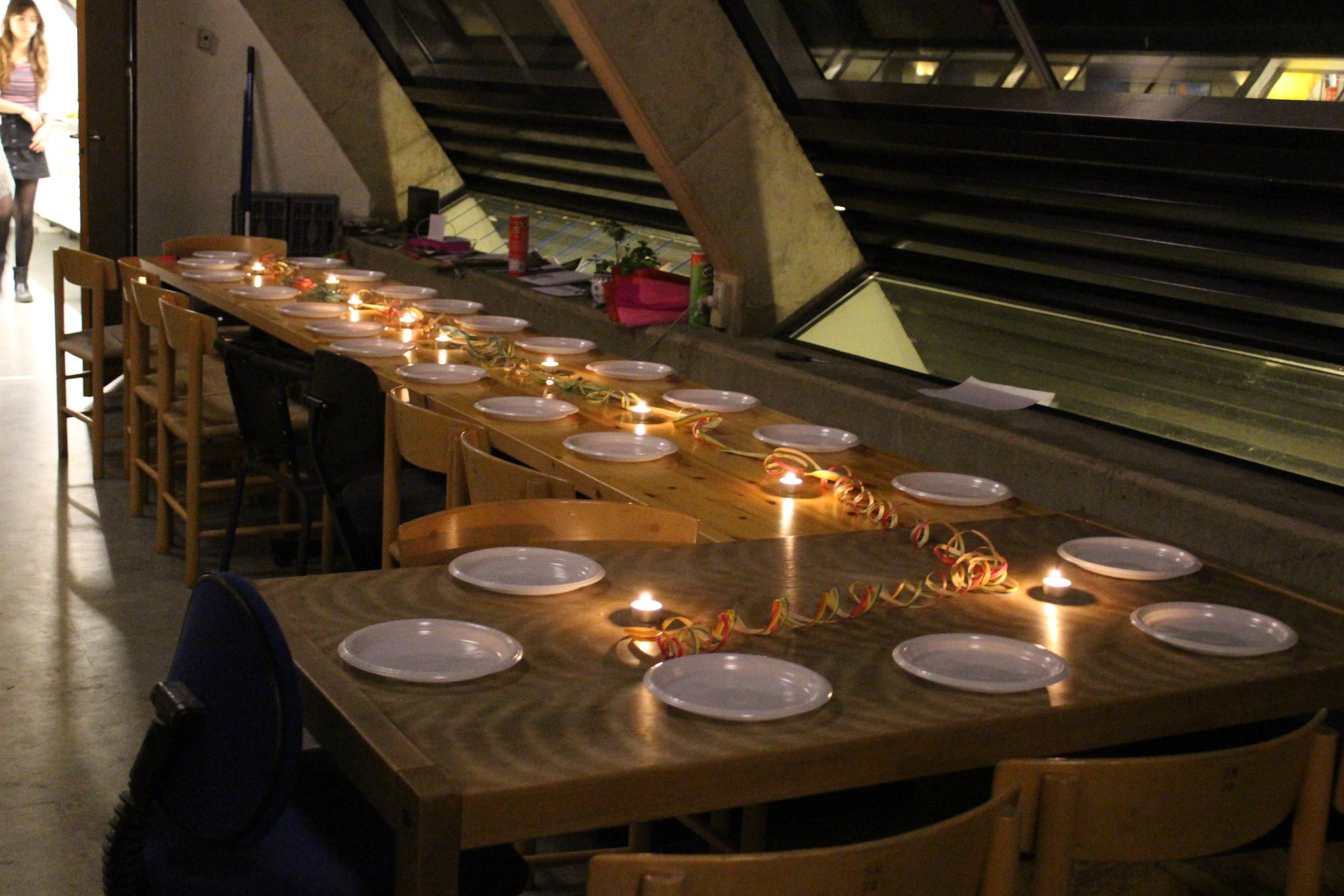
We knew that we were going to have to prepare our dinner as well, but the majority of typical Spanish dishes are quite hot, so we decided it would be better to wait for a few months to show them all our most representative dishes. Our Dutch friends thought the same, so for a few months, we kept doing dinners, but they almost never had anything to do with what we eat in our countries. And I said almost never because the Spanish always ended up making a Spanish omelette which went down well with our friends.
The fact is that without us even noticing, time flew by. Yes, this is what usually happens during Erasmus, you don't even see the time passing and from 1 second to the next, you are about to finish. By the time that we realised, it was already almost December and none of us had made dinner. It would be unfair that we got to enjoy the amazing food and we were the only ones that didn't make a meal, so we had to get it together and start working.
Our friends had high expectations of us, so even though we didn't even know what we were going to cook, we were going to have to make it big! That's when we realised this. And while everyone else only spent one day shopping and cooking, we spent a week thinking of what to make!
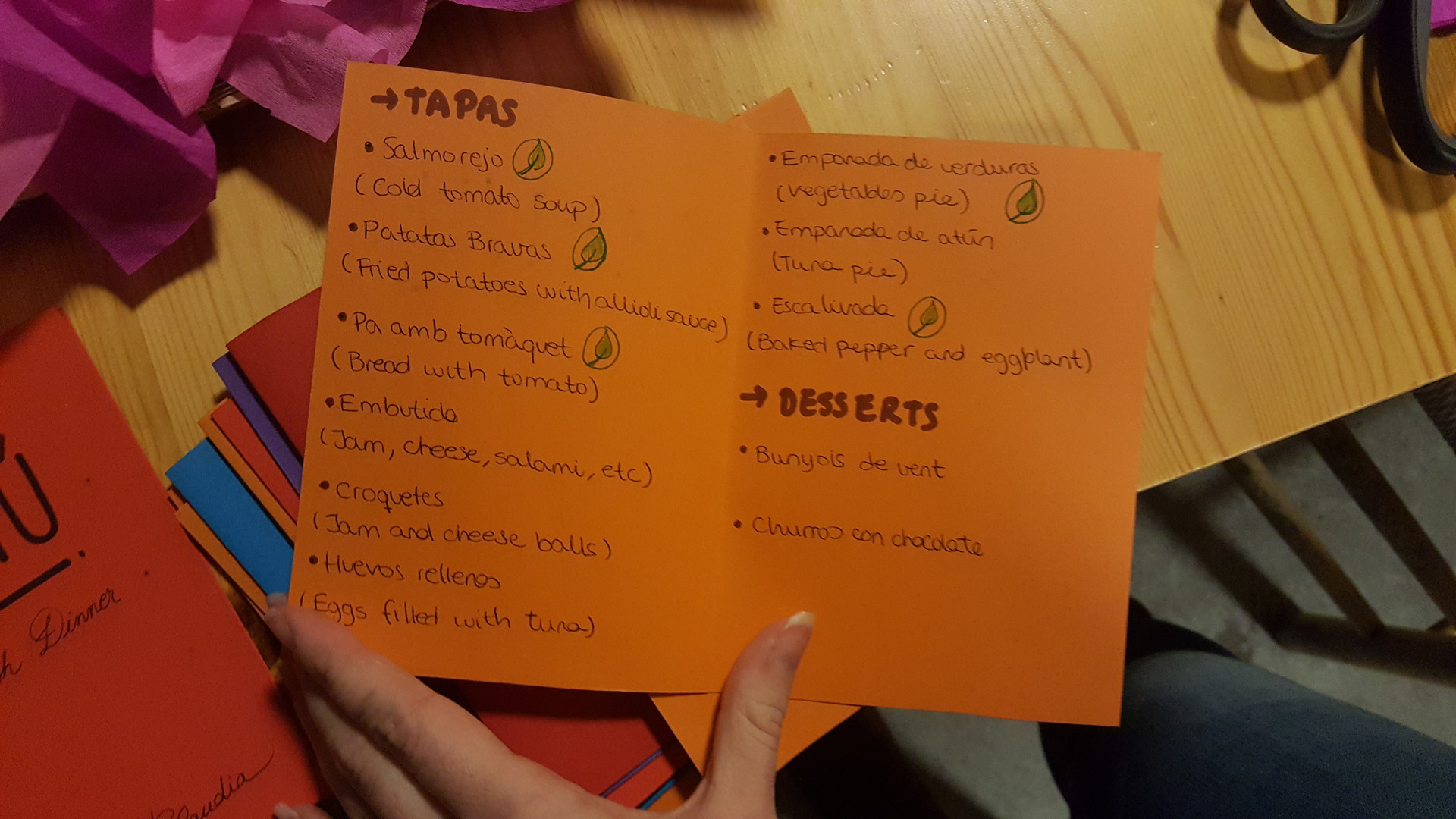
The Spanish were from Madrid and Catalonia and were skilled, so there were a lot of dishes that we could make. In the end we decided to make croquetas (croquettes), platos de embutido (plates of cured meats), pan tumaca (bread with tomato), empanadas (pies), salmorejo (chilled tomato soup), patatas alioli (creamy garlic potatoes) and the best of all, for dessert, we decided to make churros with chocolate and buñuelos (doughballs).
I have to say that except for the "embutidos" which we all brought from Spain, the rest of the products that we chose were things that could be bought in a Danish supermarket, and that was the main reason that we ruled out paella and because as it turned out, it was very difficult to get spices and some ingredients there.
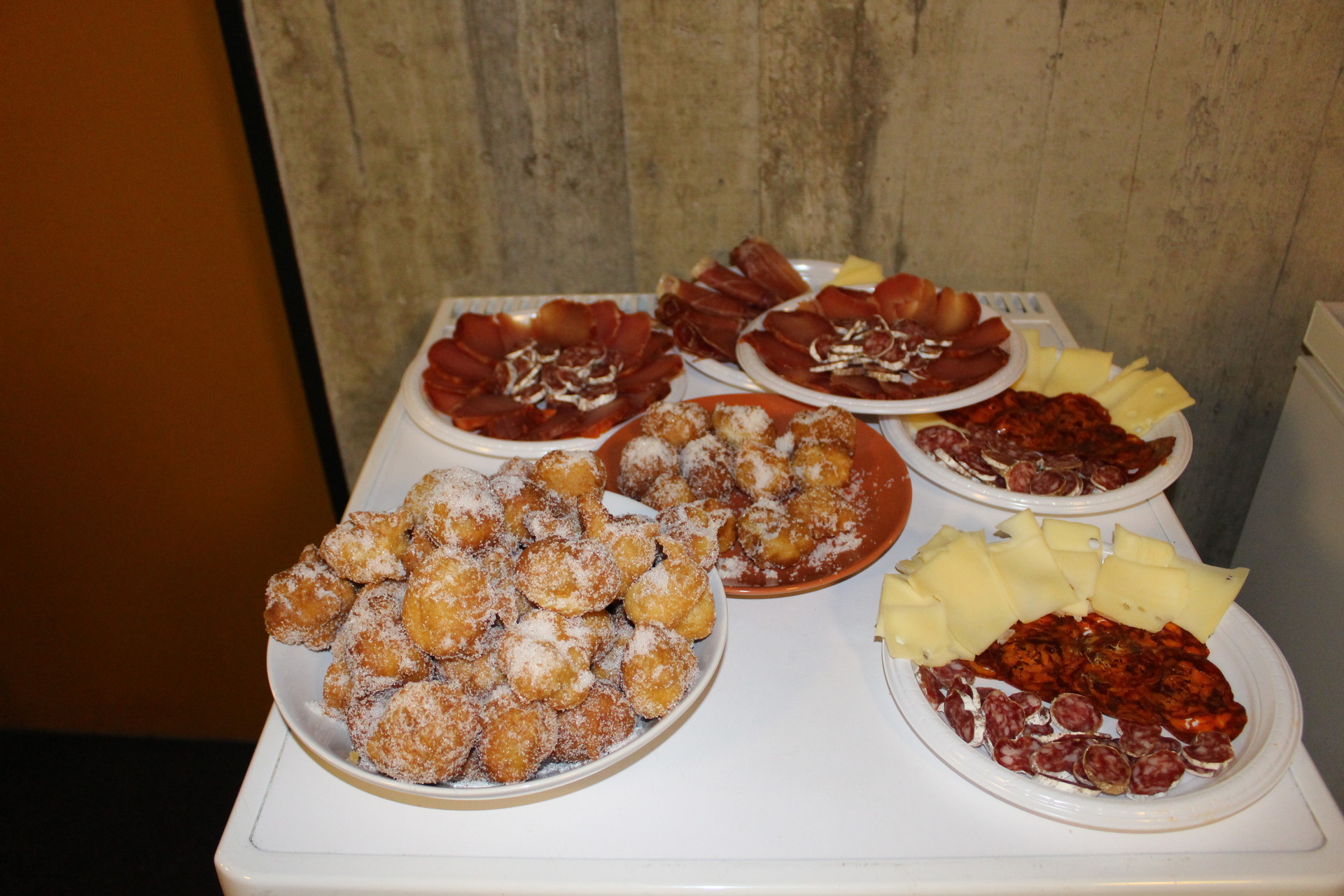
Our main problem was that none of us had tried cooking the majority of these dishes before making them that day, so this really stepped up the exigency that we were already carrying. It felt like the most important exam we would take during our degree or something like that! Thank god for the internet and family because thanks to recipes from mums, dads and grannies, and YouTube tutorials, we were able to make all the dishes decently, for it being the first time we made them.
We started cooking days in advance, to leave things prepared that would keep well and whatever needed to rest and so that we weren't running late (which happened anyway) on the day of the dinner. The first day we prepared the mixture for the croquettes, (whose recipe I am not going in to because I have already spoke about it in a specific post), the salmorejo and almost all of the dinning room decorations we used to create some ambiance.
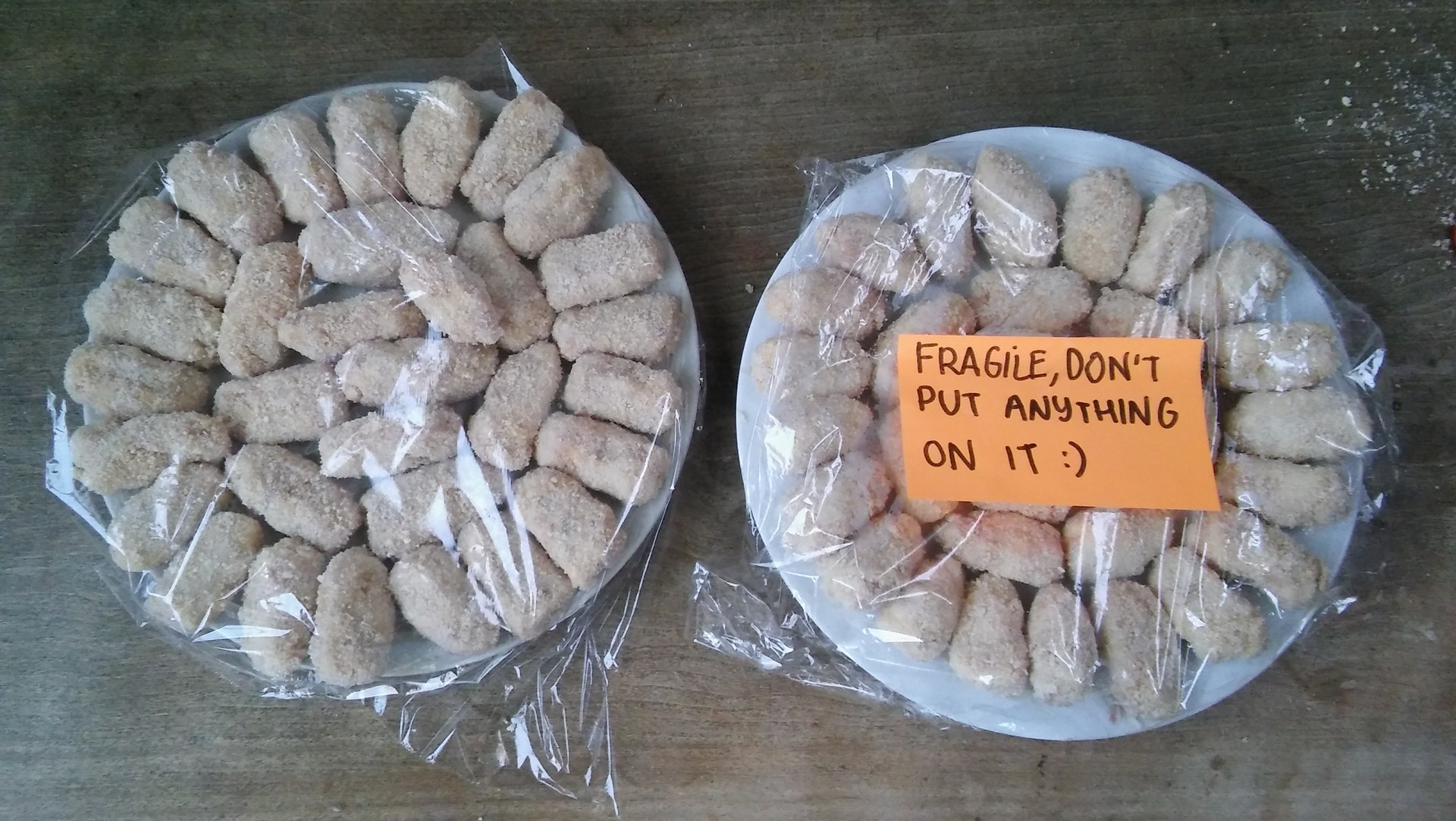
Salmorejo Recipe (Chilled tomato soup)
This was the only cold thing that we made, like we were going to make a Spanish dinner without doing a gazpacho or a salmorejo. We chose the salmorejo not only because it is faster to make but also because you need less ingredients and we already had enough dishes to make without complicating things even more.
Ingredients:
Tomatoes, white bread, olive oil, a few cloves of garlic, salt, egg, and ham in case you want to add small pieces on top when it is finished.
I am not going to write the quantities that you need because our recipe was for around 25 people and we didn't necessarily control the quantities, so it is better that you just control them according to how much you want to make.
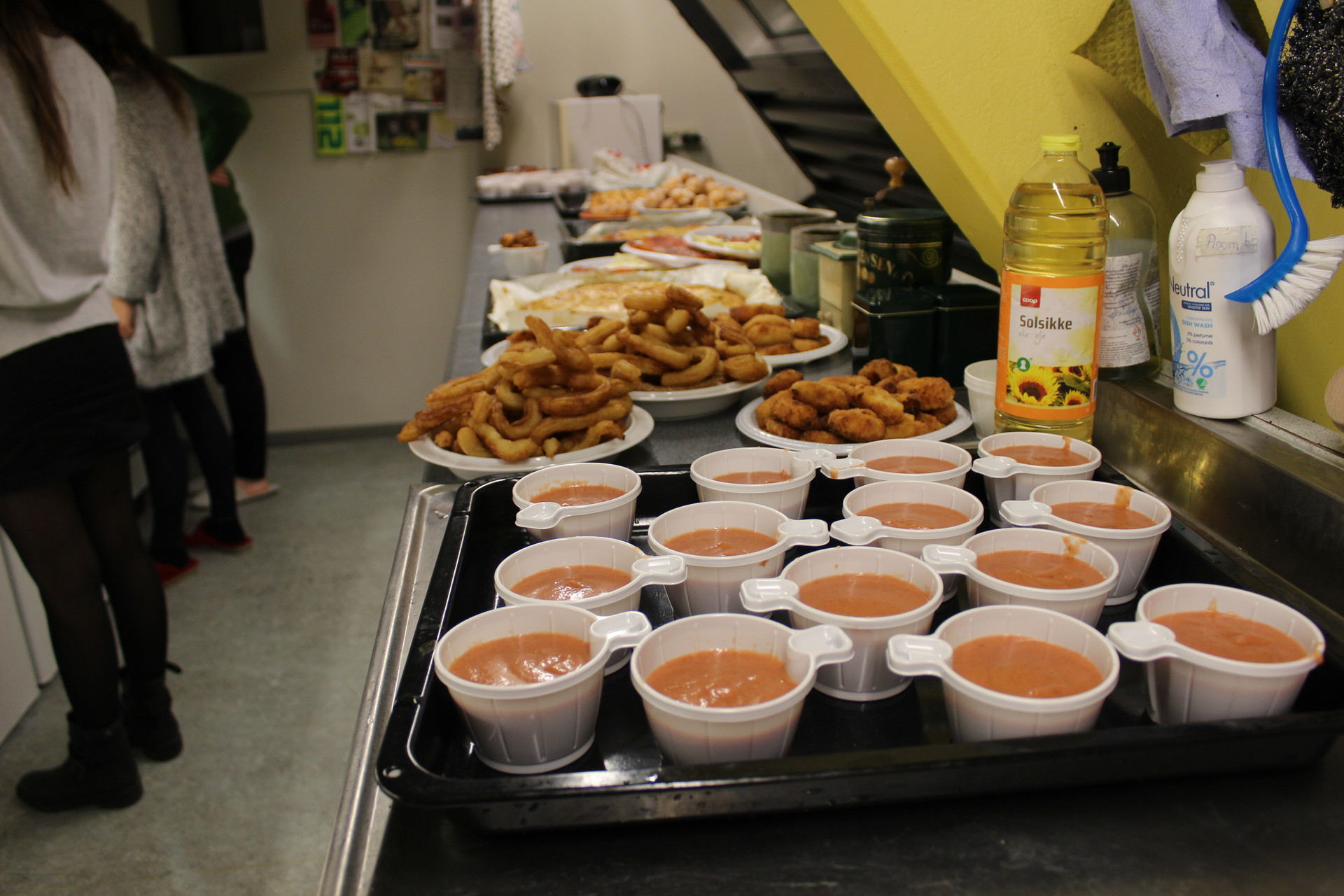
Preparation:
Use hot water to peel the tomatoes easier because otherwise it will be nearly impossible. Once they are peeled, cut them into smallish pieces and put them into the blender.
While the tomatoes are in the water, before you peel them, you can cut the bread into pieces. If you see that it is too hard, put the pieces together with the tomato in the blender, you can leave it to rest a while so the crumbs combine with tomato juice.
Peel garlic, removing the heart (because we are going to cook it) and throw them in with the bread and tomato. After that add the olive oil (it is better that you add the oil last so the bread doesn't soak it up).
Blend it all well until it is very smooth but also thick, because it doesn't have to be as much of a liquid as soup. Taste it and add salt to your taste. I am awful with this so I always leave this step up to whoever is with me.
Cook the eggs and cut them up with the ham. We only had cured ham cut in thin slices, so we could also have done them in cubes but whatever is ideal.
And you have already finished the salmorejo so you can leave it in the fridge to rest and serve it cold!
The following day we decided to make what we were missing which was basically everything. Here is were we came into the stress. With so much of us running around the kitchen, we felt like contestants on MasterChef when they say they only have 5 minutes left!
Pan tumaca (Bread with tomato)
The easiest to make, the pan tumaca, for which we used some of the tomatoes that we had plenty of the day before while we were making the salmorejo. We chose to make one slice per person, because when making so many things there was no need to make so much.
This dish is not a mystery so I am not going to spend very much time explaining it since it doesn't take much time to prepare. Honestly, in general most of the dishes we prepared were fairly easy.
Ingredients:
Ripe tomato, a loaf of bread, olive oil and salt.
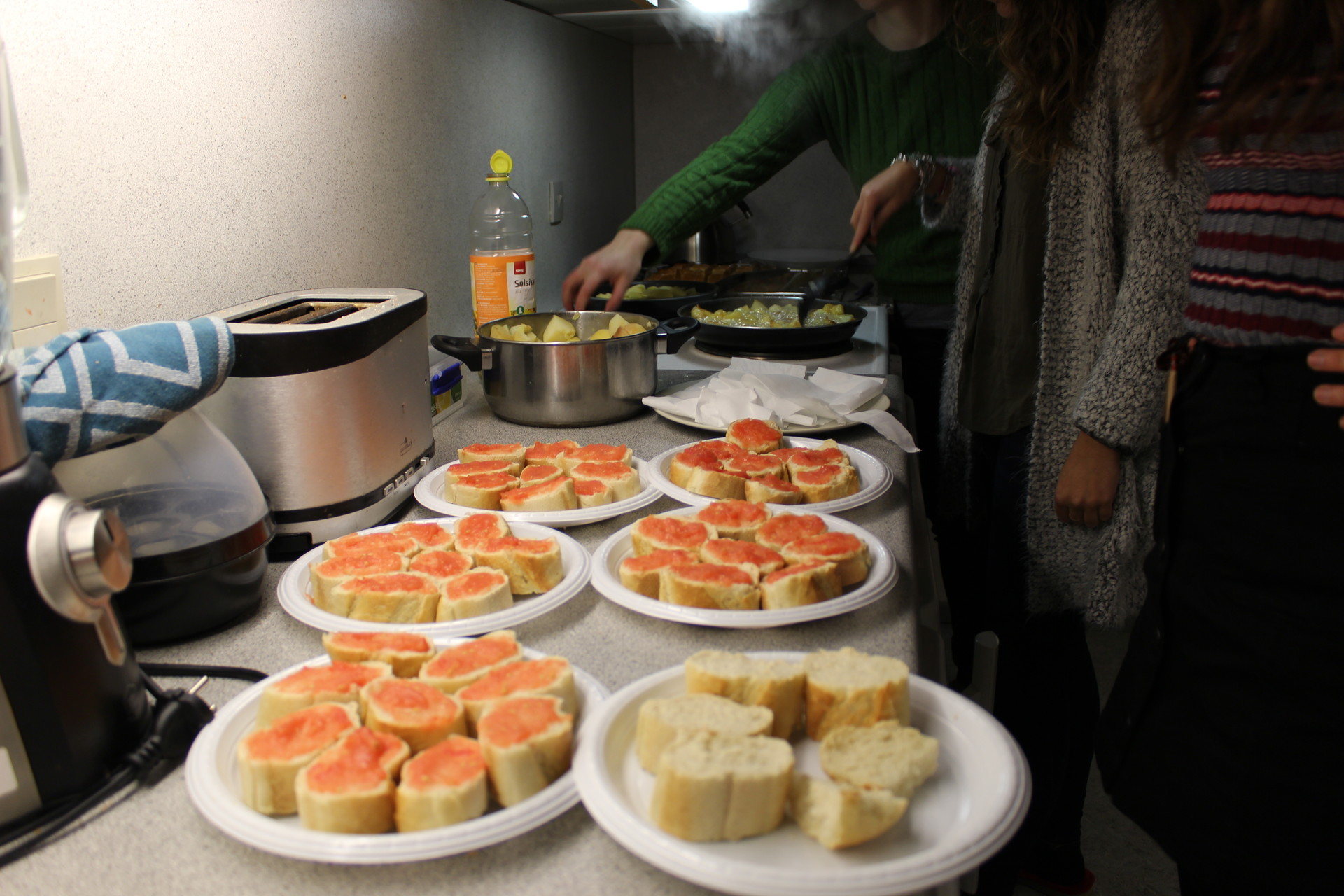
Preparation:
Cut the tomatoes in half or in quarters and then you are going to cover all of the pieces of tomato with all the pieces of bread and apply pressure so that the bread soaks up the juice of the tomato.
You can also mash the tomato with a fork and add well chopped garlic to the mixture and once you are left with a paste with bits of tomato, take it and spread it onto the slices of bread. It doesn't have to be a homogeneous paste, the bits of tomato actually make it more delicious.
After that, add a splash of oil and a pinch of salt individually to every slice. And now you have your bread with tomato!
Empanadas (Pies)
The truth is that the ideal way to make empanadas would be to make the pastry ourselves, but we didn't have the time needed to make it, so we thought that it would be better to buy it and simply create the empanadas from there.
Since there were a few vegans and vegetarians in our class, we wanted to make a variety of dishes so they could try almost everything. The only things that they couldn't eat were the ham and cheese croquettes and the empanadas. So we decided to make 2 different kinds: one with vegetables and the other with meat.
For the vegetables empanadas we used onion, courgette, peppers, garlic, salt and pepper. We cut all of the vegetables into small pieces and fried them in a pan with olive oil on a low heat. For the meat empanadas we only used mince and onion and made them exactly the same as the vegetable ones.
While frying the ingredients place the pastry into semi deep trays after greasing them or use baking paper if you have it because it makes it easier to take the pastries out of the tray when they are done.
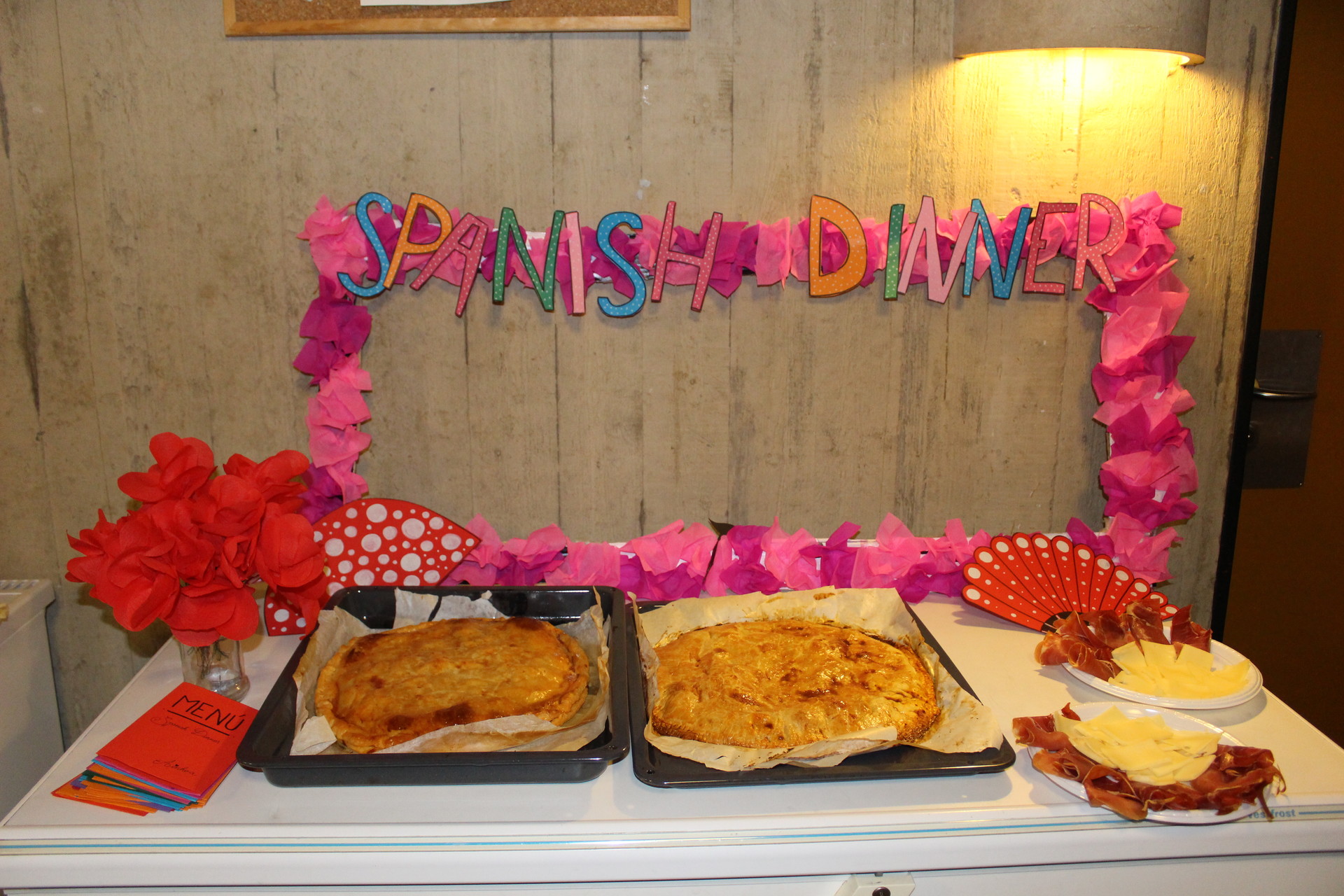
When the ingredients are done, we put them all in separate trays. Then we placed the other part of the pastry on top and used a fork to press down the edges to join the top and the base and close the pastry. Also we had some pastry left over, so we used it for decorations on top.
Once the pastries are put together we spread butter or oil on top of them to make it look good and put them in the oven. In kitchens in halls there were two ovens so we had both going at the same time.
When they are finished, they are ready to eat.
The truth is that even though we were against the clock we also had to be careful that we didn't take up the whole kitchen since it was shared between 12 people, and only one of us lived there. So we had to keep an eye on the time in case we were annoying anyone while cooking.
But don't agree with everything that we have done, we decided that we had to make a dessert, and we were not happy with only making one, so the great idea occurred to us to do not one but two desserts. It goes without saying that making two desserts is much more difficult to make than the savoury dishes but it makes it much worse when you don't even have anything to weigh out ingredients.
Churros with chocolate
It turns out that Aarhus has a few churro stalls during Christmas time but we didn't stop saying to everyone from Spain that, it was churros or nothing. So we decided to recreate our own churros which for it being the first time that we made them, they turned out quite well.
Ingredients:
Wheat flour, water, olive oil, sugar and salt.
The list of ingredients is quite simple and we didn't have to buy anything, since we had flour and sugar at home so we started off well.
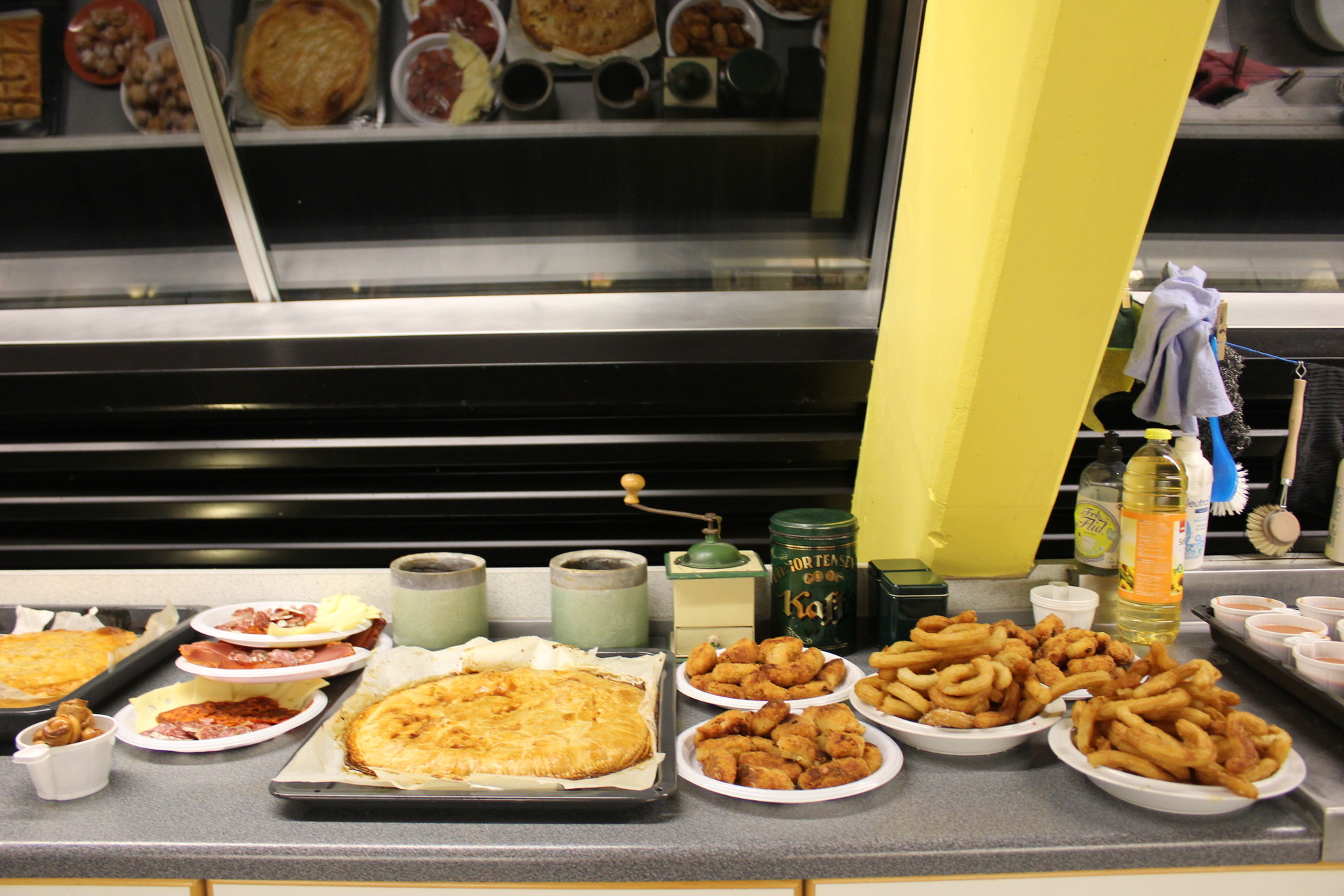
Preparation:
Firstly you need to sieve the flour so that there is no lumps in the mixture, now you have to leave it to thicken and become sticky but very homogeneous so that it looks good. Then place it in a deep bowl.
Heat water in a pot with a pinch of salt. You have to remember that it is a sweet dessert so don't overdo it. Keep the water on the heat until it boils.
When it is boiled, take a wooden spoon and make a small hole in the flour and add the boiling water in the centre. Think about it as, the water being absorbed by every grain of flour. You have to keep on removing it until you are left with a sticky and homogeneous mixture.
You can buy a piping bag or make one by hand with a plastic bag, and put the finished mixture into the bag with a spoon in order to control the amounts. The churros are created and you can shape them as this dessert typically would be.
Place a pan on the heat with a lot of oil and wait for it to get very hot. When it is, fry the churros, leaving them to cook on a medium heat.
Once they are done put them on a kitchen roll in a tray and leave them there to remove excess oil. You want them to have as little oil as possible. Then add a pinch of sugar on top and let it stick to churros.
For the chocolate we simply bought chocolate to melt and we mixed it with a little bit of milk so that it didn't end up too thick. We made this just before serving so that it didn't go cold.
Buñuelos (Dough balls)
Ingredients:
To make this dish, again like the last, you need flour, olive oil, sugar, salt, yeast, milk or water and one or two eggs. (Always according to how many you want to make, of course. )
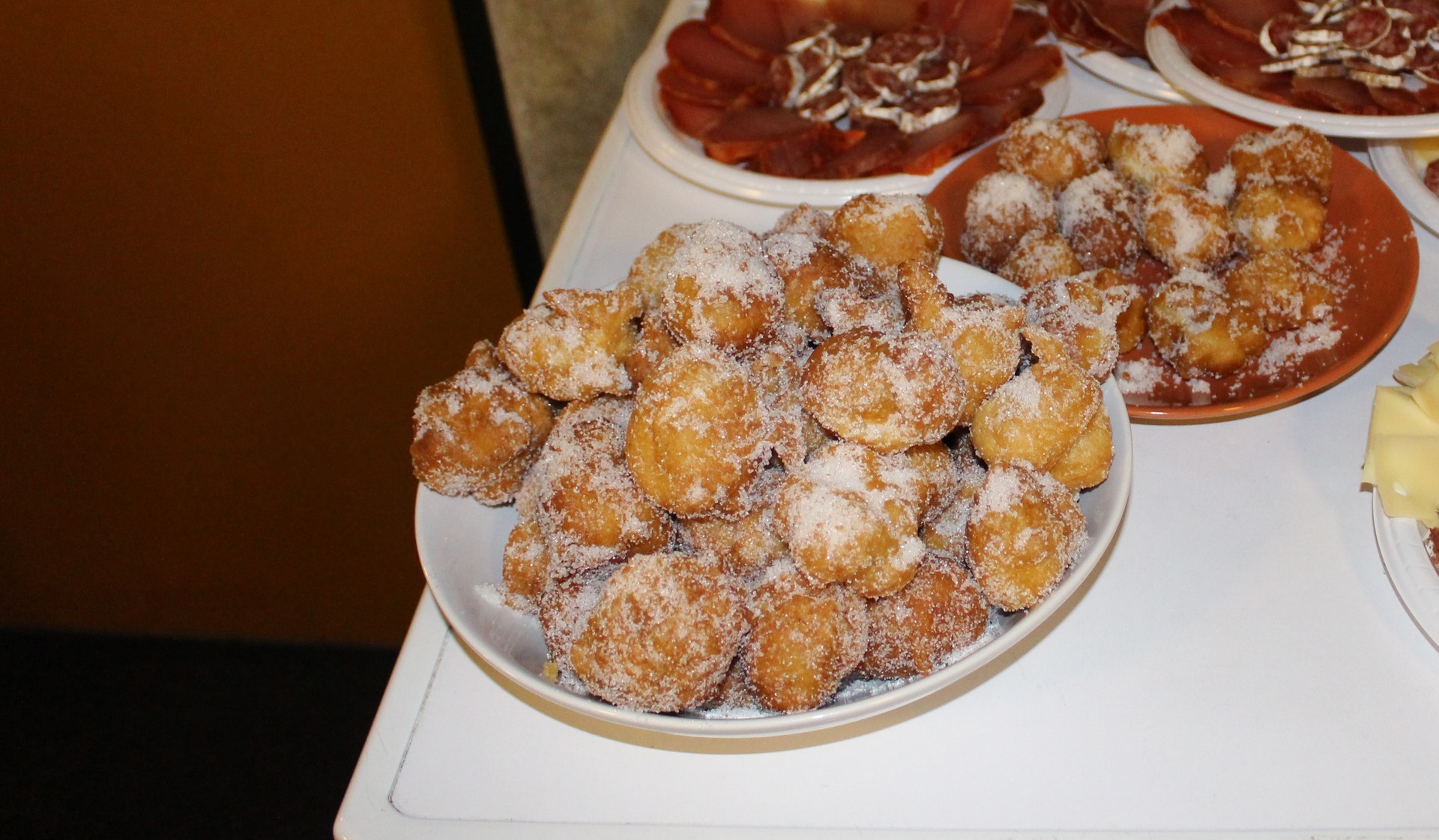
Preparation:
Just as we did with the churros, the first thing that we should do is to sieve the flour and this time the yeast as well. Once everything is sieved and in a bowl, add a pinch of salt.
Then add the eggs, olive oil and milk or water, whichever you prefer. Beat the eggs and mix it very well until you are left with a homogenous mixture that is quite thick. If it seems too thick you can add more milk or water.
Put a lot of oil in a pan on a medium heat. With a spoon, make the dough into balls. It is likely that you will need to use another spoon to help you because the dough will be very thick. Then place the balls into the pan and leave them to make the dough balls.
You need to leave them in the pan until they golden, but make sure that they don't end up overcooked on the inside. Then do the same as with the churros. Take them out and leave them to remove the excess oil on a kitchen roll. Then you can cover them in sugar or coco or leave them as they are.
Once the dishes are done we had to decorate the dinning room. We made a kind of frame with paper flowers so we could do a photoshoot, we made paper moustaches, flowers to put in your head and a menu for everyone, on which we wrote the names of all of the dishes in English and in Spanish.

The truth is that it was all worth the pain. It cost us almost €15 each to buy the ingredients and we spent as much time cleaning up the disaster that we made as it did to cook everything.
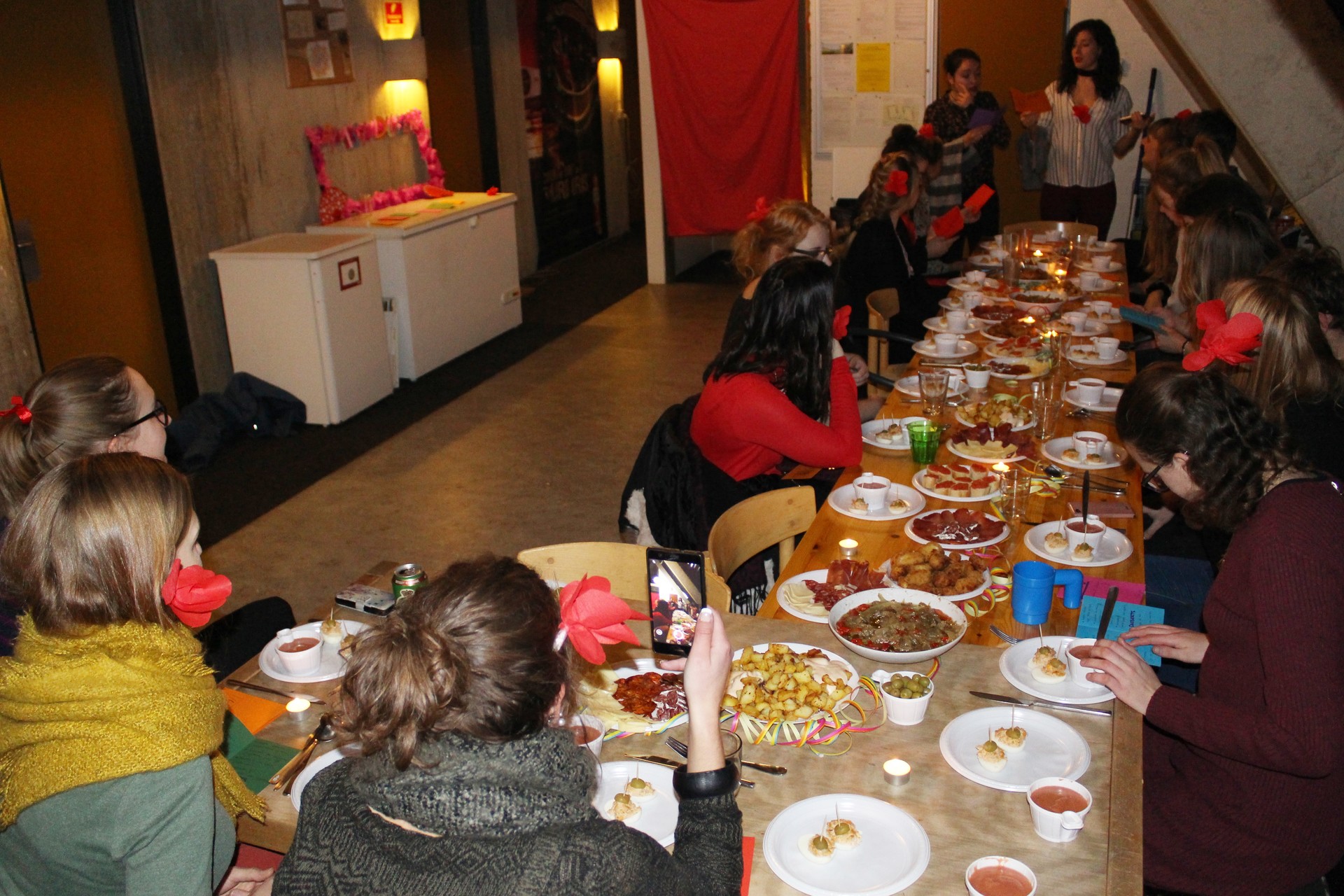
We really surprised ourselves by cooking all of the dishes by ourselves and they turned out great. The people in our class loved it all and at the end of the day that is what is most important.
Photo gallery
Content available in other languages
- Español: La gran cena española.
- Italiano: La mega cena spagnola
Want to have your own Erasmus blog?
If you are experiencing living abroad, you're an avid traveller or want to promote the city where you live... create your own blog and share your adventures!
I want to create my Erasmus blog! →
















Comments (0 comments)